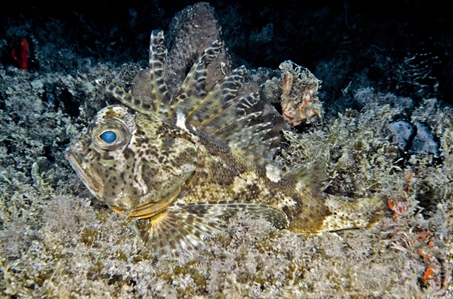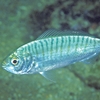General Description
Robust head and body, tapering toward tail base; head armed with low spines, a deep naked pit between eyes; anterior dorsal-fin spines very long, only connected at base, 3rd spine longest; pectoral fins large, extending beyond anal fin origin, hind margin rounded; underside of lower jaw with 3 large distinct pores on either side. Pale tan with irregular broad dark brown bands and many tiny black spots on head and body. To 48 cm.
Biology
Although common, especially in moderately deep waters, this species is rarely seen by anglers. It is taken as bycatch in commercial trawls. The venomous fin spines can inflict a very painful wound.
Habitat
On and near rocky reefs at depths of 15-593 m, but usually 50-200 m.
Reefs
Distribution guide
Southern Australia.
Species Group
Depth
Shallow (1-30 m)
Deep ( > 30 m)
Water Column
Max Size
48 cm
Diet
Carnivore
Harmful
Venomous spines can inflict mild to severe pain.
Commercial Species
No
Global Dispersal
Native to Australia
Conservation Status
- DSE Advisory List : Not listed
- EPBC Act 1999 : Not listed
- IUCN Red List : Not listed





